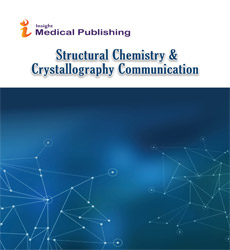Spin-layer locking in globally centrosymmetric but locally non-centrosymmetric two dimensional materials
International Conference on Applied Crystallography
October 16-17, 2017 | Chicago, USA
Chao-Xing Liu
Pennsylvania State University, USA
Posters & Accepted Abstracts: Struct Chem Crystallogr Commun
DOI: 10.21767/2470-9905-C1-003
Abstract
In this talk, I will discuss a novel phenomenon called spin-layer locking and its physical consequence in a new class of two dimensional materials with the crystal structure that is globally centrosymmetric but locally non-centrosymmetric. I will give three examples: Mono-layer PtSe2 film, a tri-layer (LaO)2(SbSe2)2 film and a bi-layer NbSe2 superconductors. Firstly, I will discuss a theoretical analysis of the recent surprising experimental observation of helical spin texture in a centrosymmetric mono-layer PtSe2 film by the angle-resolved photoemission spectroscopy. This observation can be explained by dipole induced Rashba effect with spin-layer locking: Opposite spins are degenerate in energy, while spatially separated in the top and bottom Se layers. In my next example of a tri-layer (LaO)2(SbSe2)2 film with a similar dipole induced Rashba effect and spin-layer locking, I will discuss a direct physical consequence, electrically tunable multiple Dirac cones, due to the narrow band gap in this system. Finally, I will discuss a two dimensional superconducting material, bilayer NbSe2, and show that a finite momentum pairing (known as Fulde-Ferrell-LarkinOvchinnikov pairing) can be induced by in-plane magnetic fields due to the spin-layer locking.
Google Scholar citation report
Citations : 275
Abstracted/Indexed in
- Google Scholar
- China National Knowledge Infrastructure (CNKI)
- Directory of Research Journal Indexing (DRJI)
- WorldCat
- Geneva Foundation for Medical Education and Research
- Secret Search Engine Labs
- CAS (Chemical Abstracting Services)
Open Access Journals
- Aquaculture & Veterinary Science
- Chemistry & Chemical Sciences
- Clinical Sciences
- Engineering
- General Science
- Genetics & Molecular Biology
- Health Care & Nursing
- Immunology & Microbiology
- Materials Science
- Mathematics & Physics
- Medical Sciences
- Neurology & Psychiatry
- Oncology & Cancer Science
- Pharmaceutical Sciences

